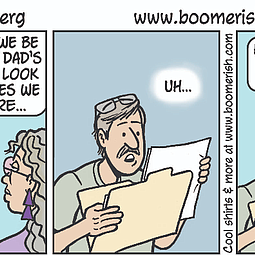Get savings savvy: Tips and tricks for couponing in the Internet era
November 22, 2011 at 8:34 a.m. | Updated November 22, 2011 at 8:34 a.m.
Did you know there is a coupon for almost anything you might want to buy? Each year some $485 billion worth of coupons circulate. Consumers cashed in--and saved--about $3.7 billion in 2010. While coupons have been an established part of the American scene for decades, manufacturers and retailers began offering coupons via the Internet only about ten years ago. In those early days, counterfeit coupons quickly went into circulation, costing retailers millions. Even now, nearly a thousand bogus coupons are logged at the Coupon Information Center.
However, the industry has tightened controls by implementing bar codes, expiration dates and other methods to secure the value of their coupons. You can find coupons for restaurants, automotive services, groceries, spa treatments, entertainment, vacations and more.
Consider groceries, for example. The U.S. Department of Agriculture estimates that a family of two seniors spends $76 to $145 per week, depending upon how thrifty or extravagant they are. That's $4,000 to $7,500 per year. Avid couponers claim savings of 20 to 50 percent on their grocery budgets alone.
You'll find that merchants and manufacturers offer four kinds of coupons: Linked coupons, coupon codes, printable coupons and electronic coupons.
The linked coupon is not really a coupon at all. It is a link to a special discount page for the product you want to buy online. As you complete the checkout process, the discount is applied. A coupon code, also known as a "promotional code," is a string of characters that activates a discount price for your product when you check out during an online purchase. A printable coupon is just what its name suggests: You print it on your home computer and take it to the store. An electronic coupon can be sent to your smart phone, or loaded onto your store loyalty card.
You'll find many web sites that offer coupons. Most legitimate sites offering printable coupons, such as coupons.com and smartsource.com, require that you download a printing program to your PC. Such programs make the coupons secure and essentially fraud-proof, allowing the merchant to accept them without concern.
Groupon.com and Livingsocial.com deliver coupons that you can print or receive on your Android or iPhone. Rather than provide coupons that offer a cents-off discount or two-for-one deal, a typical offer at these sites asks you to spend, say, $10 to receive a coupon for $20. Discounts can range up to 90 percent on a wide array of products and services
Once you've downloaded, printed or received electronic coupons, there are two key strategies that will help you keep more of your money in your pocket.
"Stack" your discounts when possible. For example, redeem your coupon on double coupon days, on senior discount day or on special sales days when the store offers unique deals. Stacking can sometimes deliver overall discounts of 70 to 80 percent, or more. Check out CouponMom.com. When you register you'll be able to find Internet coupons at over 40 national stores on a state-by-state basis. A partner site, ShortCuts.com, adds electronic coupons directly onto your store loyalty card. For example, when a cashier rings up your purchases, present your store loyalty card and the savings will be automatically taken without fumbling for paper coupons.
Whether they come from the Sunday paper or the Internet, there's little difference between coupons and real cash money. With the financial bind many Americans are in, it just makes sense to spend a few minutes each week harvesting some of those Internet deals. As Benjamin Franklin said, "If you would be wealthy, think of saving as well as getting."
Content Provided by Spot55.com





